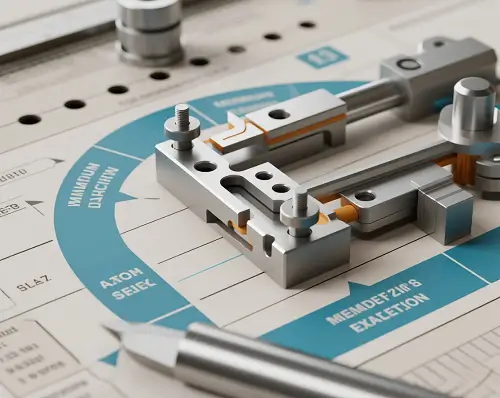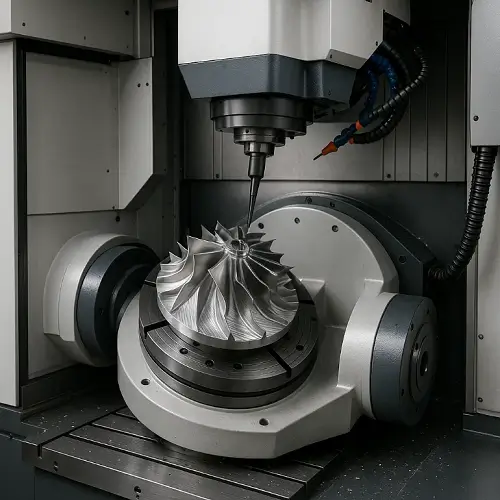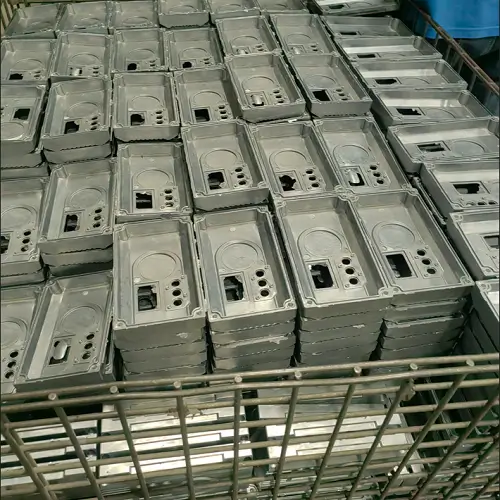When machining components that demand strict tolerances, even minor deviations can cause the part to fail. For many high-precision applications, ±0.005 mm CNC machining is not only about accuracy — it’s about enabling complex assemblies, minimizing functional risk, a
In this article, we’ll explore what tight tolerance means in practical machining, when it is truly needed, and how experienced CNC manufacturers like JeekRapid can help you achieve it — without compromising cost-effectiveness.

What Determines Tight Tolerances in CNC Machining?
In most conventional machining projects, a standard tolerance of ±0.01 mm is sufficient for general function and performance. However, when a part must interface with another critical component, transmit motion, or ensure sealing, even that level of precision may not be enough.
Tolerances of ±0.005 mm (5 microns) and tighter are typically required for:
Precision mold components
High-performance aerospace or medical parts
Optical housings and mechanical sensors
High-speed rotating assemblies
Maintaining such tight tolerances requires strict control of thermal expansion, tool wear, and material stress — all of which must be carefully managed during the manufacturing process at JeekRapid.
Why ±0.005 mm Tolerance Is More Than a Marketing Term
Many machine shops claim to offer “tight tolerance” machining. But achieving ±0.005 mm is not as simple as reprogramming a CNC machine. It involves:
Machine selection: Thermally stabilized, high-rigidity machining centers
Tooling strategy: Custom or ultra-fine end mills, precise tool compensation
Environmental control: Shop temperature fluctuations can result in micron-level dimensional shifts
Quality assurance: Use of CMMs (coordinate measuring machines), air gauges, or laser scanners
Only a team with deep experience — and the right equipment and processes — can consistently deliver this level of precision.
When Should You Specify ±0.005 mm Tolerances?
Over-specifying tolerances is one of the most common design for manufacturability (DFM) mistakes. Not every part requires 5-micron accuracy, and holding such precision across all features can significantly increase machining costs.
You should consider this level of tolerance when:
Your component mates with another tightly-toleranced part
The feature impacts sealing, alignment, or movement
You’re working with difficult-to-machine materials that cannot be adjusted post-machining
Assembly failure is too costly or dangerous to risk
In short, ±0.005 mm tolerances should be reserved for critical features.
Materials and Tolerance: What’s Achievable?
Not all materials respond equally to ultra-precise machining. Variations in material hardness and thermal behavior can greatly influence achievable tolerances.
Aluminum alloys (6061, 7075): Easily maintained at ±0.005 mm with proper fixturing
Stainless steel (304, 316, 17-4PH): Achievable, but requires careful control of machining stress and heat
Titanium: Feasible, but challenging due to spring-back and tool wear
Plastics (Delrin, PEEK): More difficult due to thermal expansion; tight tolerances generally not recommended
Each material demands a different strategy to ensure dimensional stability.
Real-World Example: High-Speed Bearing Housing
We previously partnered with a client in the robotics sector who required a bearing housing with an inner diameter tolerance of ±0.005 mm. The part was milled from 7075 aluminum, with stress relief heat treatment and final machining conducted in a temperature-controlled environment.
Using a 5-axis CNC mill equipped with real-time probing and final CMM inspection, we delivered 200 parts — all within spec. This level of precision helped the client reduce failure rates by 70% during high-RPM testing scenarios.
Precision Without the Premium — Is It Possible?
Tight tolerances do not always mean higher costs. With the right design input and an experienced CNC partner, many features can be machined precisely as part of an optimized production cycle. Cost-saving factors include:
Grouping tolerance-critical features within a single setup
Avoiding tight tolerances on non-critical areas
Choosing materials that machine predictably
Designing with standard tool sizes and radii in mind
A good manufacturer will advise where to hold tight — and where you can loosen tolerances without compromising performance.
Summarize
±0.005 mm precision is not excessive. In industries such as aerospace, medical, optics, and robotics — where failure is not an option — it’s the baseline for safety and performance. But only by partnering with the right CNC manufacturer can you strike the right balance between strict specifications and smart production strategy.
Need parts with micron-level precision? Reach out to our engineering team to discuss your drawings and tolerance requirements. At JeekRapid, we specialize in high-precision CNC components — delivered fast, and done right the first time.Get quote!
Frequently Asked Questions (FAQ)
What does ±0.005 mm tolerance mean in CNC machining?
It refers to a dimensional variation of no more than 5 microns above or below the nominal measurement. This level of precision is typically used for components requiring tight fits or critical performance.
What industries commonly require ±0.005 mm CNC machining?
Aerospace, medical device, robotics, optics, and advanced electronics all frequently require this level of machining precision for high-performance applications.
Can plastics be machined to ±0.005 mm tolerances?
Technically possible in certain cases, but not recommended due to thermal instability. Plastics tend to expand or contract, making consistent results difficult to maintain.
How do I know if my design needs this tolerance?
If your part is involved in high-speed movement, precise sealing, optical alignment, or tight assemblies — it likely requires tight tolerance machining. Our engineering team can help review and advise.
How do tight tolerances affect production cost?
Tighter tolerances typically increase machining time, tooling requirements, and inspection needs. However, proper design and expert planning can keep costs manageable.


